Walnut husks (Juglans regia) Walnuthusks (E)
Family: Juglandaceae
Dye: Brown-beige Instant dyeing dye (no pre-staining required)
The walnut originates from southeastern Europe and Asia and you can now see it everywhere. This tree bears fruits (walnuts) that are in a husk. In the autumn the husk splits and falls to the ground. Then the walnuts can be harvested and you can get started with the bolsters!
The walnut…
... can grow up to 30 meters high.
… bears fruits, walnuts. They are not only very tasty, but also very healthy.
… keeps mosquitoes and flies away.
… bears fruit only after many years, your patience is tested!
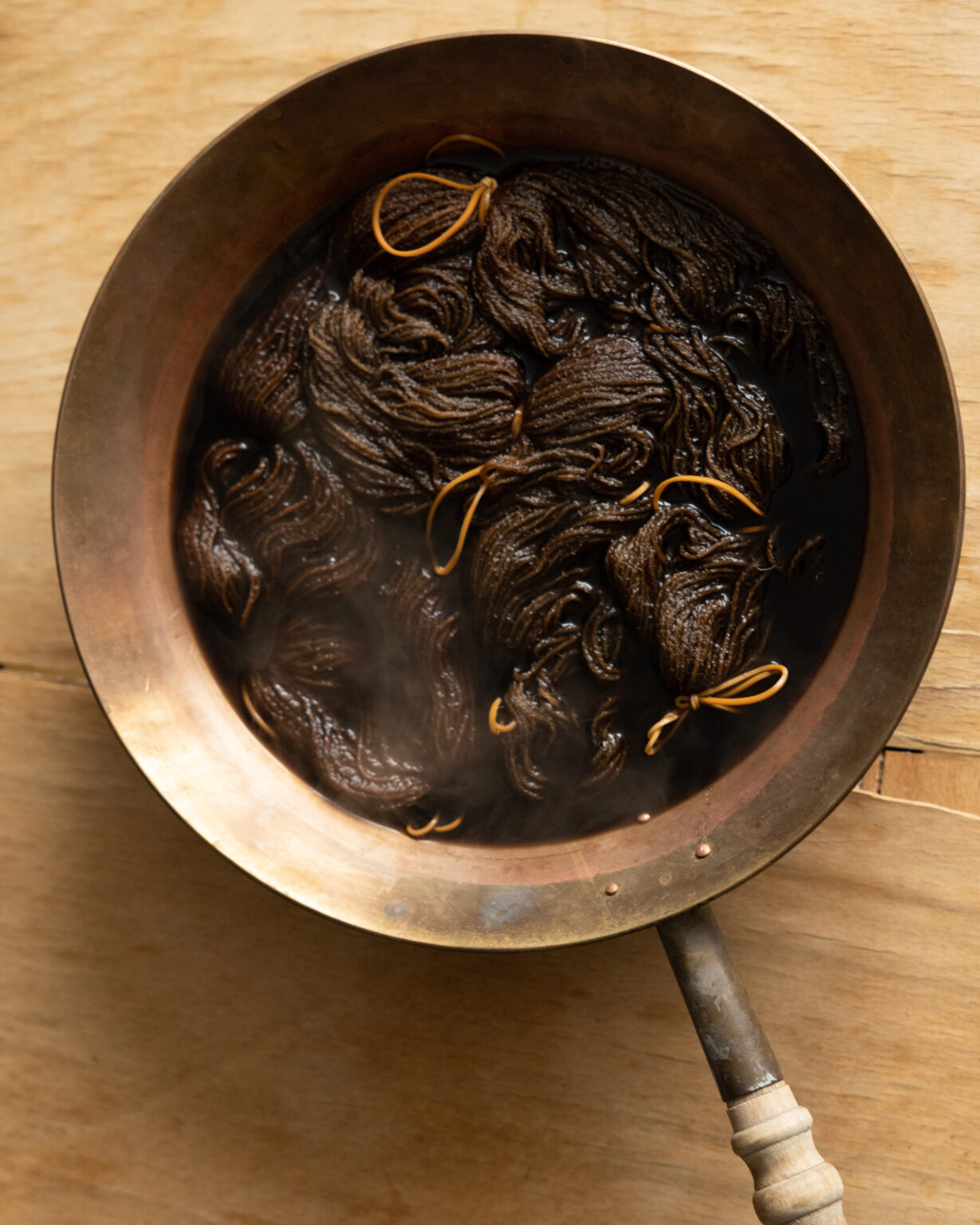
Step 1: Wash (only if you are going to dye cotton, skip step 1 if you are going to dye wool or silk) Fill a bucket with plenty of water and 2 cups of household soda and leave your cotton in it for 24 hours. Rinse well the next day.
Step 2: Put the walnut husks in a jar with a liter of water. Let this soak for 1-2 days.
Step 3:Pour the extract through a wash bag into the paint pan and tie the wash bag closed and fill the pan with water to 3-5 liters. Bring the dye bath to a boil and let it simmer for an hour. Lower the temperature to 30 degrees and add the wool, silk or cotton. You can leave the walnut husks in the laundry bag in the dye bath while dyeing. Make sure that the fibers can 'swim' well. Bring the temperature back to boiling point (for silk to about 80 degrees) and let it simmer for an hour. Allow the fibers to cool slowly in the dye bath.
MC tips:
1) After cooling, leave the fibers in the dye bath for an extra night.
2) Instead of a laundry bag, you can also tie the bolsters into a bundle in a piece of cheesecloth.
3) For a deep brown color you can use 100 grams of walnut husks.
Step 4: Fix Rinse the fiber and let it soak in a bucket of water with 1 cup of vinegar for an hour. Then rinse thoroughly and hang to dry.
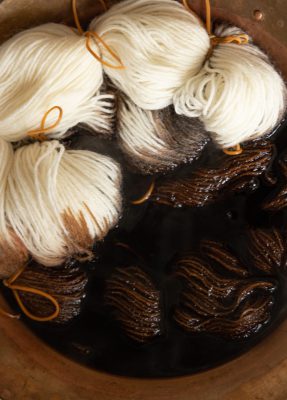
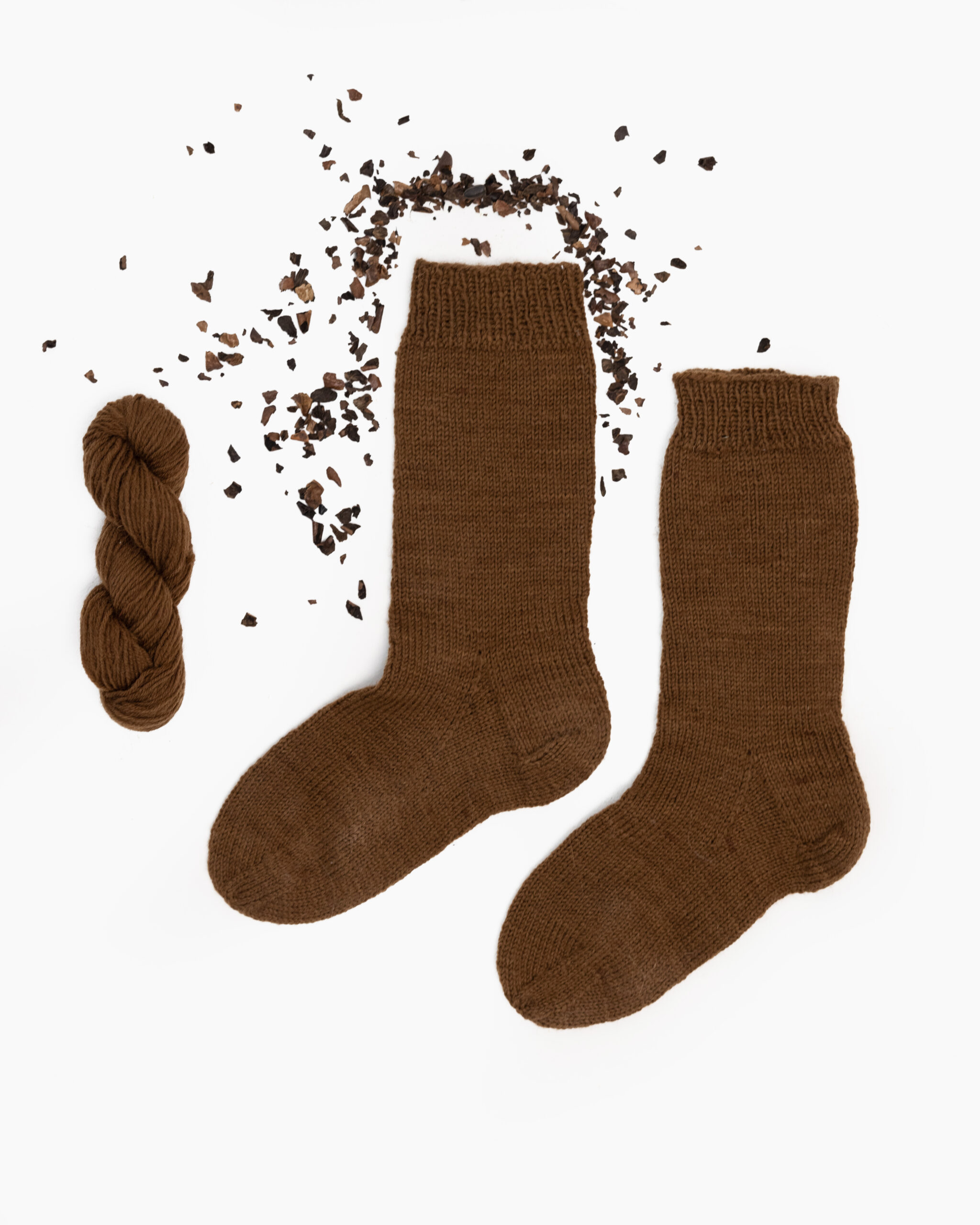
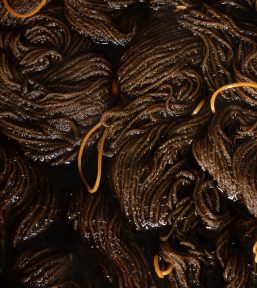
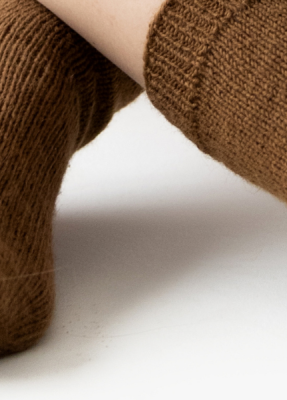


How long do I soak my walnut husks?
It depends on the size of the madder roots and wether they are crushed, powdered or roots. We advice to soak our roots 48 hours and you can safely do it longer if you are aiming for darker tones.
What can I dye with walnuthusks?
Any natural fiber that is calulose (plant) based or proteine based should work. This includes flax, linen, cotton on the celulose part and wool and silk on the proteine part.
Synthetic fibers are never dyeable with natural dyes,.
Can I store a walnut husk dye bath?
Yes you can! If you seal it without a lot of oxigen it will stay good for weeks. If there is oxigen you might get mold on top of it, but you can scoop it off and it will not affect your dye-bath too much.

Natural dyeing can seem overwhelming sometimes. If you want to dive in straight away and learn as you go we advice you to consider our Oogst Sampler Starterkit. This set contains three dyes and a plethora of materials to dye with these three dyes. You get step-by-step instructions that walk you through the process and it serves as a primer on natural dyeing.
Wezenland 1
1791 AZ, Den Burg
Texel, The Netherlands